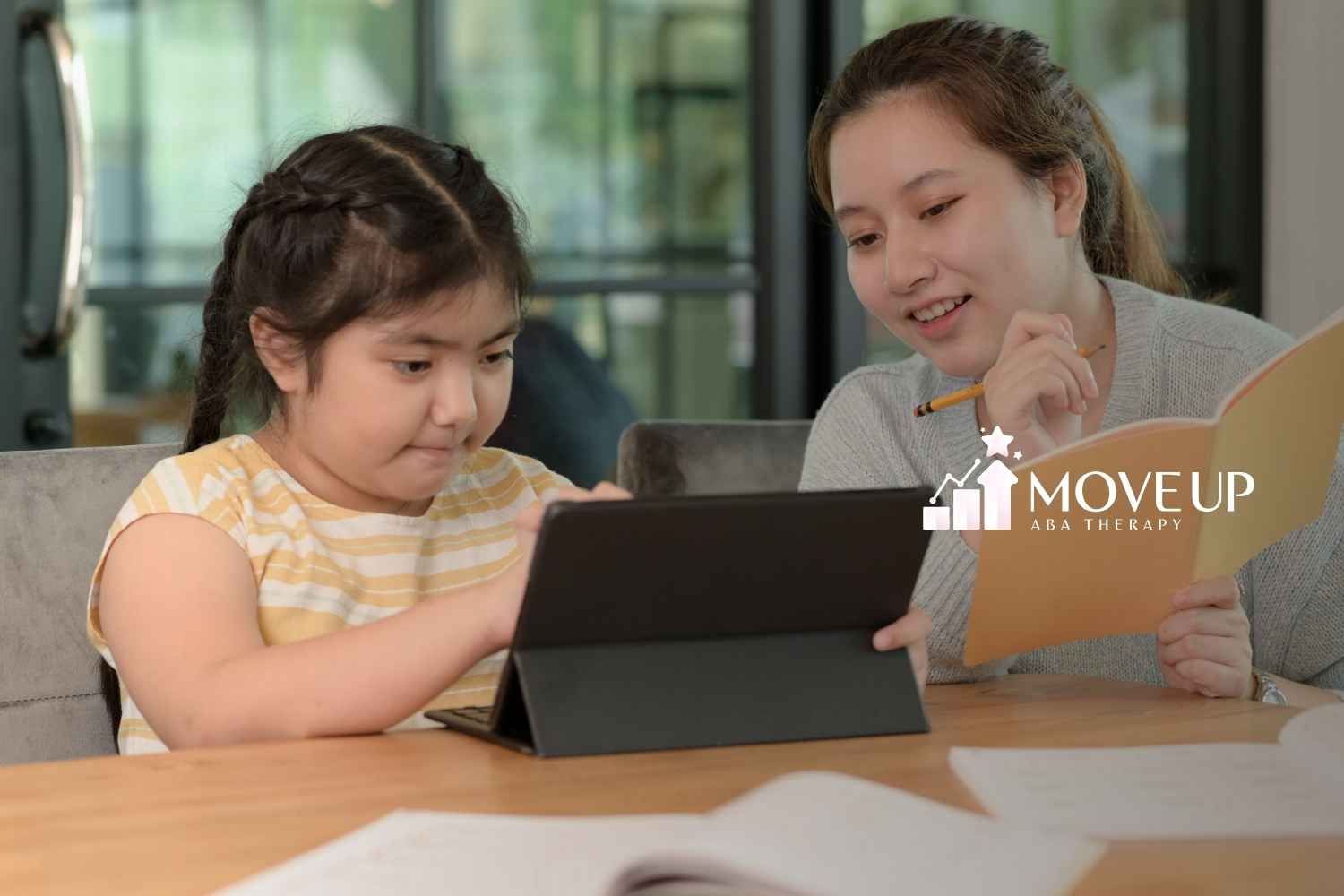Addressing challenging behaviors in autistic children can feel overwhelming, but a well-crafted Behavior Intervention Plan (BIP) offers a path forward. This structured document isn’t just a plan—it’s a roadmap designed to understand and address the underlying causes of behaviors.
By focusing on strategies tailored to your child’s unique needs, a BIP empowers parents, educators, and therapists to work together in promoting positive change.
Whether you’re new to BIPs or looking to refine an existing one, this guide will walk you through its essential components and benefits.
What is a Behavior Intervention Plan (BIP)?
A Behavior Intervention Plan is a structured document that outlines strategies to address specific behavior challenges your child may face. It is developed based on observations and assessments, focusing on understanding the underlying causes of behaviors that may be disruptive or concerning. This plan includes specific goals, targeted behaviors, and intervention strategies tailored to your child’s individual needs.
In asking “what does BIP mean?”, you can think of it as a roadmap that guides you, educators, and therapists in modifying challenging behaviors effectively and constructively. The BIP is designed to be a living document, evolving as your child grows and their needs change.
Importance of Having a BIP
Having a BIP for your child is crucial for several reasons:
- Clarity and Structure
A BIP provides a clear framework for addressing behavioral concerns. It helps you understand the behaviors that need to be modified and the strategies that will be employed to do so.
- Consistency
With a BIP in place, everyone involved in your child’s care, including parents, teachers, and therapists, will be on the same page. Consistent application of strategies ensures that your child receives the same messages and interventions across different environments.
- Focus on Positive Behavior
A well-developed BIP not only addresses negative behaviors but also promotes positive alternatives. It encourages your child to develop new skills and behaviors that will benefit them socially and academically.
- Data-Driven Decisions
A BIP allows for monitoring and evaluating your child’s progress with specific metrics and data collection methods. This facilitates informed adjustments to the plan as needed.
- Empowerment
A BIP empowers you as a parent to actively participate in your child’s behavioral development. Understanding and implementing the strategies outlined in the plan helps you support your child’s progress effectively.
Overall, having a Behavior Intervention Plan can provide guidance and support in navigating the challenges your child may encounter while ensuring they receive the appropriate resources and interventions to thrive.
Components of a Behavior Intervention Plan
Understanding the components of a Behavior Intervention Plan is vital for its effectiveness. Each plan consists of specific elements that work together to support your child’s behavior management needs.
1. Target Behaviors
Target behaviors are specific actions or responses that the BIP aims to address. Identifying these behaviors clearly is the first step in developing an effective plan. These behaviors can range from social skills deficits to disruptive actions in a classroom or home setting.
When defining target behaviors, it is important to be precise and objective. Instead of using vague language, focus on measurable behaviors. For example, rather than stating “talking back,” you could specify “raising voice during discussions.”
Examples of Target Behaviors:
- Aggression towards peers
- Non-compliance with instructions
- Difficulty following routines
- Tantrums in public settings
2. Strategies and Interventions
Once you have outlined the target behaviors, the next component of a Behavior Intervention Plan is selecting appropriate strategies and interventions. These are the methods you will use to encourage positive behavior and decrease problematic actions.
Interventions can be grouped into three categories: preventative strategies, teaching strategies, and consequence strategies. Each category plays a crucial role in addressing the targeted behaviors effectively.
Preventative Strategies
These techniques aim to minimize the chances of problematic behaviors occurring in the first place. Examples include establishing structured routines and modifying the environment.
- Teaching Strategies
These involve directly teaching the desired behaviors. Techniques like role-playing or social skills training are useful in helping your child learn appropriate responses.
- Consequence Strategies
These are used to reinforce positive behavior or discourage negative actions. Positive reinforcement, such as praise or rewards, can encourage the behaviors you want to see, while appropriate consequences can deter undesired behaviors.
As you develop the BIP, collaborate with educators and therapy professionals to explore the most effective strategies for your child’s unique situation. By clearly outlining target behaviors and selecting appropriate interventions, you can create a robust behavior intervention plan example that supports your child’s growth and development.
Developing an Effective BIP
Creating an effective Behavior Intervention Plan is a crucial step in supporting your child’s needs. This process involves collaboration with professionals and focusing on the unique aspects of your child.
Collaboration with ABA Therapists
Working with Applied Behavior Analysis (ABA) therapists is essential when developing an effective BIP. These professionals have the expertise to identify strategies that work best for your child’s specific behavior challenges. They can guide you in understanding what does BIP mean in the context of your child’s needs, ensuring that the plan is well-informed.
When collaborating with ABA therapists, consider the following steps:
- Assess your child’s specific behaviors that require intervention.
- Discuss potential strategies that the therapist recommends.
- Ensure that your input as a parent is valued in the plan’s development.
- Maintain open communication with the therapist to adjust the plan based on progress.
This partnership allows for a more comprehensive understanding of your child’s behaviors and the most effective interventions to implement.
Individualization for Your Child
Each child is unique, and so should their behavior intervention plan be tailored to fit their individual requirements. Individualization involves customizing interventions to address your child’s specific strengths, weaknesses, and personal circumstances.
Key points for individualizing your BIP include:
- Conducting a Functional Behavior Assessment (FBA) to identify the root causes of behaviors.
- Developing specific, measurable goals that align with your child’s needs and capabilities.
- Choosing interventions that reflect your child’s interests and motivations.
- Involving your child in the process, when appropriate, to empower them and increase their engagement.
By personalizing the BIP, you enhance its effectiveness and increase the likelihood of positive outcomes for your child. Whether you’re looking for a behavior intervention plan example or want to understand the details more thoroughly, focusing on collaboration and individualization will ensure that the plan is beneficial and practical for your child’s development.
Implementing the BIP
Implementing a Behavior Intervention Plan is a critical step in supporting your child’s progress. Maintaining consistency in applying the plan and regularly monitoring its effectiveness are essential components of successful implementation.
1. Consistency and Monitoring Progress
Consistency is vital for the successful application of a BIP. All caregivers, educators, and therapists must use the strategies outlined in the plan uniformly. When everyone involved in your child’s care is on the same page, it creates a supportive environment that reinforces positive behaviors.
Monitoring progress is equally important. Regularly tracking your child’s behavior will help you determine if the strategies in the BIP are effective. If you notice progress, it may indicate that the strategies are working. Conversely, if there are no improvements, it may be time to reassess and consider adjustments to the plan.
Here are some ways to monitor progress:
- Daily Behavior Logs: Document your child’s behavior throughout the day.
- Weekly Reviews: Set aside time each week to review behavior data with the team.
- Parent-Teacher Communication: Keep an open line of communication with educators.
2. Adjustments and Revisions
A BIP is not static; it should evolve based on your child’s needs and progress. Adjustments may be necessary if the original strategies are not yielding the desired outcomes. Regular evaluation of the plan ensures that it remains relevant and effective.
You may consider making revisions by:
- Collaborating with Professionals: Discuss concerns with your ABA therapist to revise strategies based on what’s working.
- Gathering Feedback: Involve teachers and other caregivers in discussions about your child’s behavior and necessary changes.
- Utilizing Data: Review the collected behavior logs and progress reports to guide decisions on revisions.
As you implement the behavior intervention plan example, remember that flexibility is key. Being open to change can lead to better support for your child and a more effective intervention plan.
Behavior Intervention Plan Example
Case Study: Applying a Behavior Intervention Plan
Imagine a scenario where a child named Alex frequently interrupts others during group activities at school. This behavior disrupts the learning environment and affects Alex’s ability to engage with peers. To address this issue, a behavior intervention plan (BIP) is developed.
The BIP outlines the following:
- Target Behavior: Interrupting during group activities.
- Replacement Behavior: Raising a hand and waiting for a turn to speak.
- Strategies:
- Provide positive reinforcement when Alex raises a hand.
- Implement visual cues to remind Alex of expected behaviors.
Throughout the implementation, the school staff and parents monitor Alex’s progress using a daily chart that tallies instances of interruptions versus successes in raising a hand.
Practical Examples and Scenarios of BIP Implementation
Implementing a behavior intervention plan requires consistency across various settings. Here are several practical examples to illustrate how to apply a BIP effectively in daily situations.
- Home Environment:
- Target Behavior: Tantrums during homework time.
- Strategy: Break homework into smaller chunks and provide breaks. When Alex completes a section without a tantrum, offer a small reward.
- Social Situations:
- Target Behavior: Not sharing toys with siblings.
- Strategy: Set a timer for sharing intervals. When Alex shares willingly, give praise and acknowledge the positive behavior.
- Community Outings:
- Target Behavior: Running away in public spaces.
- Strategy: Use a visual schedule to prepare Alex for outings. Discuss expectations before leaving the house, and provide immediate praise for staying close.
By carefully outlining these strategies and adjusting them based on Alex’s progress, you can create a supportive structure that encourages positive behavior. Remember, monitoring and ongoing communication with everyone involved in Alex’s life are critical for the success of the behavior intervention plan example. Consistent application of the strategies will help Alex develop more appropriate behaviors over time.
Conclusion
Creating and implementing a Behavior Intervention Plan is a powerful way to support your child’s behavioral development and overall well-being. With the right strategies and collaboration, a BIP can turn challenges into opportunities for growth.
Ready to take the next step? At Move Up ABA, we specialize in providing personalized ABA therapy services across Maryland. Our team of dedicated professionals is here to guide you and your child on this journey. Contact Move Up ABA today and discover how we can help your child thrive!
FAQs
What is a Behavior Intervention Plan (BIP)?
A BIP is a structured guide that addresses specific behavior challenges through targeted strategies and goals, tailored to an individual’s needs.
Why is a Behavior Intervention Plan important for my child?
It ensures a consistent and structured approach to addressing challenging behaviors, promoting positive alternatives, and supporting developmental progress.
How do I create a Behavior Intervention Plan?
Collaborate with educators and therapy professionals to identify target behaviors, set measurable goals, and implement effective interventions.
Sources:







